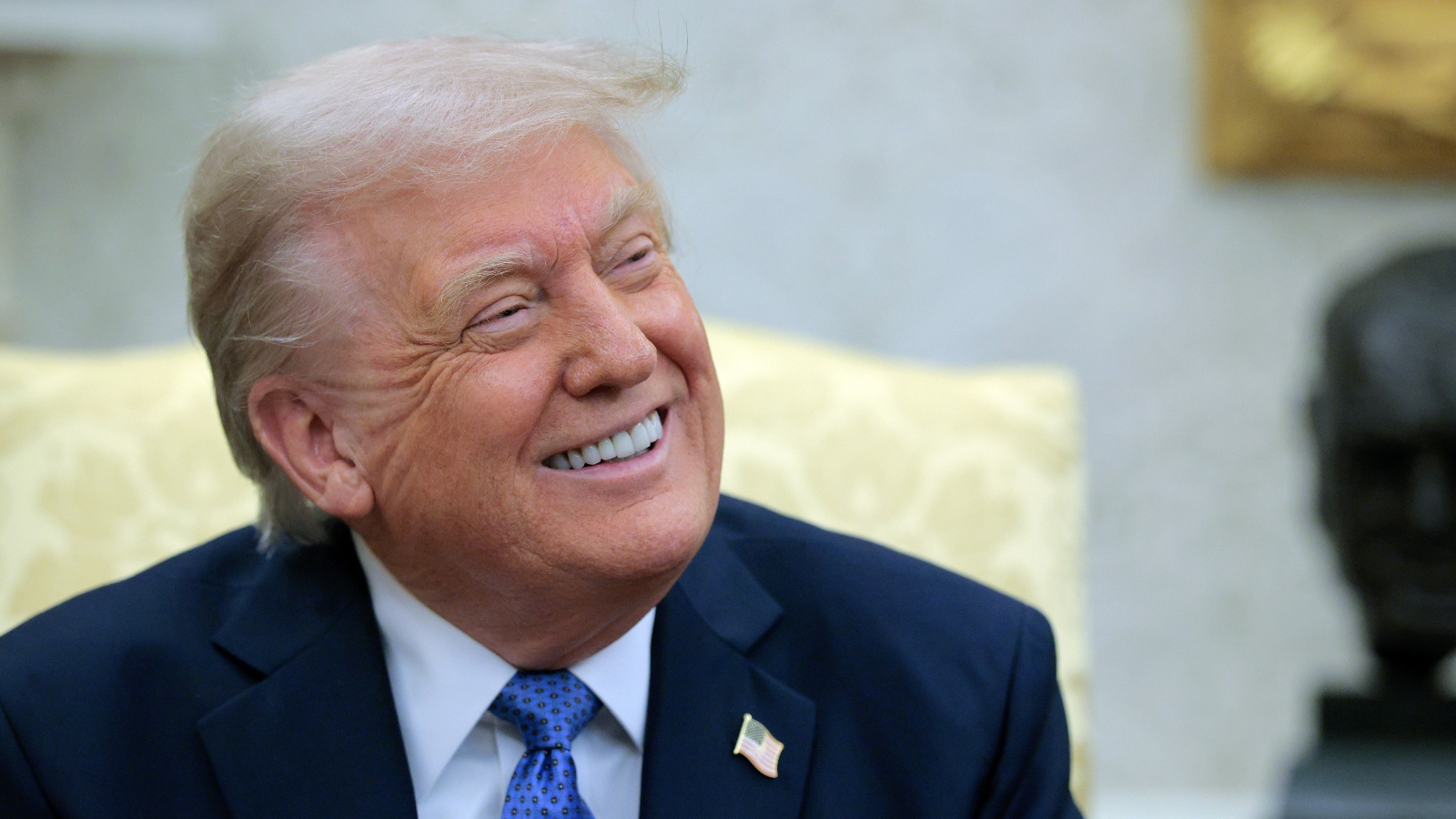Amid intense criticism from his political opponents, particularly those from the Democratic Party, President Donald Trump’s economic policies are now being vindicated by hard data, showing remarkable progress in key areas such as national debt reduction and trade negotiations with China. Critics had long predicted that Trump’s aggressive economic policies, especially his tariff strategy, would lead to widespread economic collapse, but recent reports suggest that the opposite is happening. Trump’s administration is experiencing some of its most significant economic wins to date, despite the hurdles and challenges it has faced.
National Debt Reduction: A Dramatic Shift in Fiscal Policy
A new report published by The Washington Examiner reveals a stunning contrast in the management of national debt under the Trump administration. Between January 22 and May 6, 2025, the national debt held by the public increased by only $37 billion. This pales in comparison to the same period in 2024, under former President Joe Biden, during which the debt rose by over $478 billion.
The data not only shows that Trump has dramatically slowed the growth of national debt, but it also reveals that the national debt has actually been reduced during his presidency. This significant fiscal achievement marks a reversal of the direction taken under the Biden administration and presents a stark contrast to the longstanding concerns about Trump’s ability to manage the economy.
For years, Democrats and critics in the media have warned that Trump’s policies would lead to catastrophic national debt levels and economic instability. However, these latest numbers provide clear evidence that Trump has successfully reduced the rate of debt accumulation. In fact, the current figures suggest that the national debt could continue to decrease over the next few years, despite the challenges of a global pandemic and ongoing political tensions.
Trump’s Tariff Strategy: A Turning Point in Global Trade
On the international stage, President Trump’s tariff strategy has been a point of contention since he first introduced his economic policies. Critics claimed that imposing tariffs on countries, particularly China, would lead to trade wars, higher prices for consumers, and global economic instability. However, recent developments indicate that Trump’s aggressive tariff policies are starting to yield positive results for the U.S., with China already making concessions and signaling a willingness to engage in trade talks.
Initially, Trump imposed a 145% tariff on Chinese goods in an attempt to force China into renegotiating its trade practices. In addition to the tariffs, the administration also introduced a wide range of trade sanctions aimed at limiting China’s economic influence over the U.S. The aggressive tariff strategy was met with retaliatory tariffs from China, but recent reports suggest that China is beginning to feel the pressure.
According to reports, around 25% of U.S. imports to China have been exempted from the 145% tariffs, amounting to approximately $40 billion worth of American-made goods that will now be allowed into China without the added tax. Items such as pharmaceuticals and industrial chemicals are among the products that will be exempted, marking a significant shift in China’s trade policies. This move suggests that China is starting to recognize the effectiveness of the U.S. tariff strategy and is adjusting its approach in response to Trump’s economic policies.
China’s Response: Strategic Adjustments and Negotiation
Trade specialists suggest that China’s decision to exempt certain products from tariffs is more of a strategic maneuver rather than an act of conciliation. Chinese President Xi Jinping’s spokesperson has acknowledged that Chinese officials are “evaluating” the Trump administration’s latest trade offer, indicating that there is a genuine interest in resuming trade talks. This shift in tone is a notable departure from the more aggressive rhetoric previously seen, particularly during a speech delivered by Chinese U.N. Ambassador Fu Cong, who criticized U.S. tariffs as “unilateralism” and “bullying practices.”
Despite this criticism, China is now indicating a willingness to engage in negotiations with the U.S. The decision to exempt specific products from tariffs, such as ethanol imports, shows that China is not only interested in de-escalating trade tensions but is also recognizing the importance of these goods to its economy. This level of cooperation is a significant victory for the Trump administration, which has been using tariffs as a tool for negotiation rather than mere punitive measures.
U.S. Treasury Secretary Scott Bessent has expressed confidence that China will eventually reach a trade deal with the U.S. In a recent interview, Bessent stated, “I am confident that the Chinese will want to reach a deal. And as I said, this is going to be a multi-step process. First, we need to de-escalate. And then over time, we will start focusing on a larger trade deal.” Bessent’s optimism is backed by the recent progress in tariff exemptions and the new tone from Chinese officials, suggesting that both countries may be moving toward a more balanced trade agreement in the near future.
The Role of Tariffs in Shaping Global Trade Policy
Trump’s use of tariffs as a central component of his trade strategy has shifted the global trade landscape. While tariffs were once seen as a tool of last resort, Trump has effectively used them to force other nations, particularly China, to the negotiating table. The success of this strategy is evident in the growing number of countries seeking to negotiate new trade deals with the U.S. In fact, over 75 countries have reportedly reached out to discuss new trade arrangements with the Trump administration, signaling a significant shift in the global trade balance.
By using tariffs to level the playing field for American industries, Trump is reshaping the way the U.S. engages in international trade. His “America First” approach has put the U.S. in a stronger negotiating position, allowing it to secure better terms for American businesses and workers. This shift is likely to have long-lasting effects on global trade dynamics, as other nations may be forced to adopt similar policies in order to protect their own industries from the impact of U.S. tariffs.
Impact on U.S. Economy and Global Competitiveness
The positive developments in the U.S. economy and trade relations are contributing to a growing sense of optimism within the administration. Trump’s tariff strategy, combined with his focus on reducing the national debt, has created a more competitive and resilient economy. As the U.S. continues to negotiate better trade deals and reduce its fiscal burden, it is positioning itself as a dominant player in global trade.
The effects of Trump’s economic policies are already being felt across various industries, from manufacturing to technology. The reduction in the national debt has helped to stabilize the economy, providing a more solid foundation for future growth. At the same time, the progress in trade negotiations with China is opening up new markets for U.S. businesses, creating opportunities for American products to compete more effectively in international markets.
Conclusion: Trump’s Economic Strategy and Its Future Impact
As the Trump administration moves forward with its economic agenda, the results are becoming increasingly clear. The reduction in the national debt and the ongoing progress in trade negotiations with China are significant victories for Trump and his supporters. These successes demonstrate the administration’s ability to navigate complex economic challenges while prioritizing American interests.
With China making concessions on tariffs and the U.S. economy showing signs of recovery, Trump’s economic strategy is proving to be more effective than many initially believed. As the administration continues to negotiate better trade terms and reduce the national debt, it is positioning the U.S. for long-term economic success.
The success of the Trump administration’s approach to tariffs and fiscal policy will likely continue to shape U.S. economic policy for years to come. As the U.S. moves toward securing better trade deals and stabilizing its fiscal position, it is clear that Trump’s policies are making a lasting impact on both the domestic economy and global trade relations.

